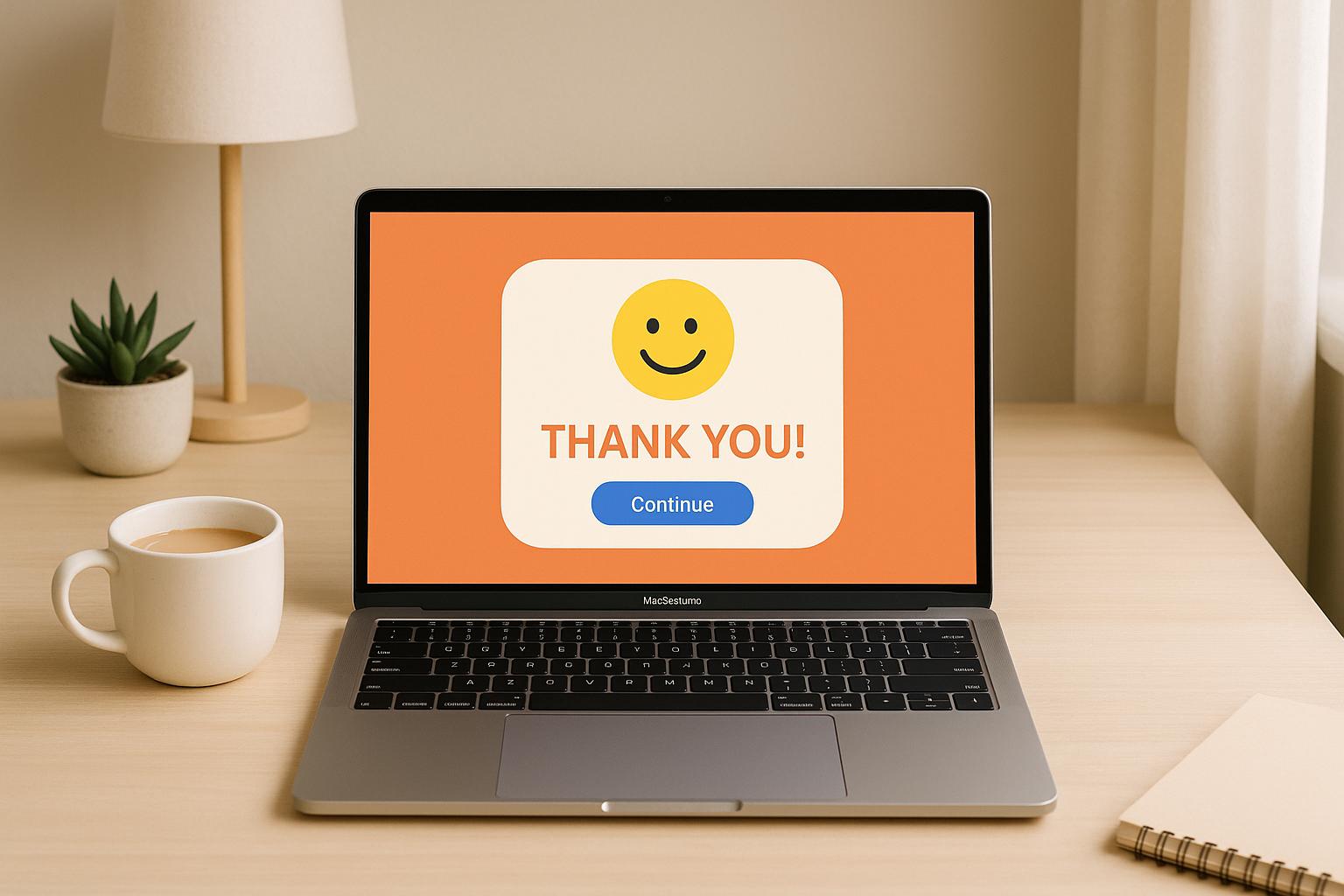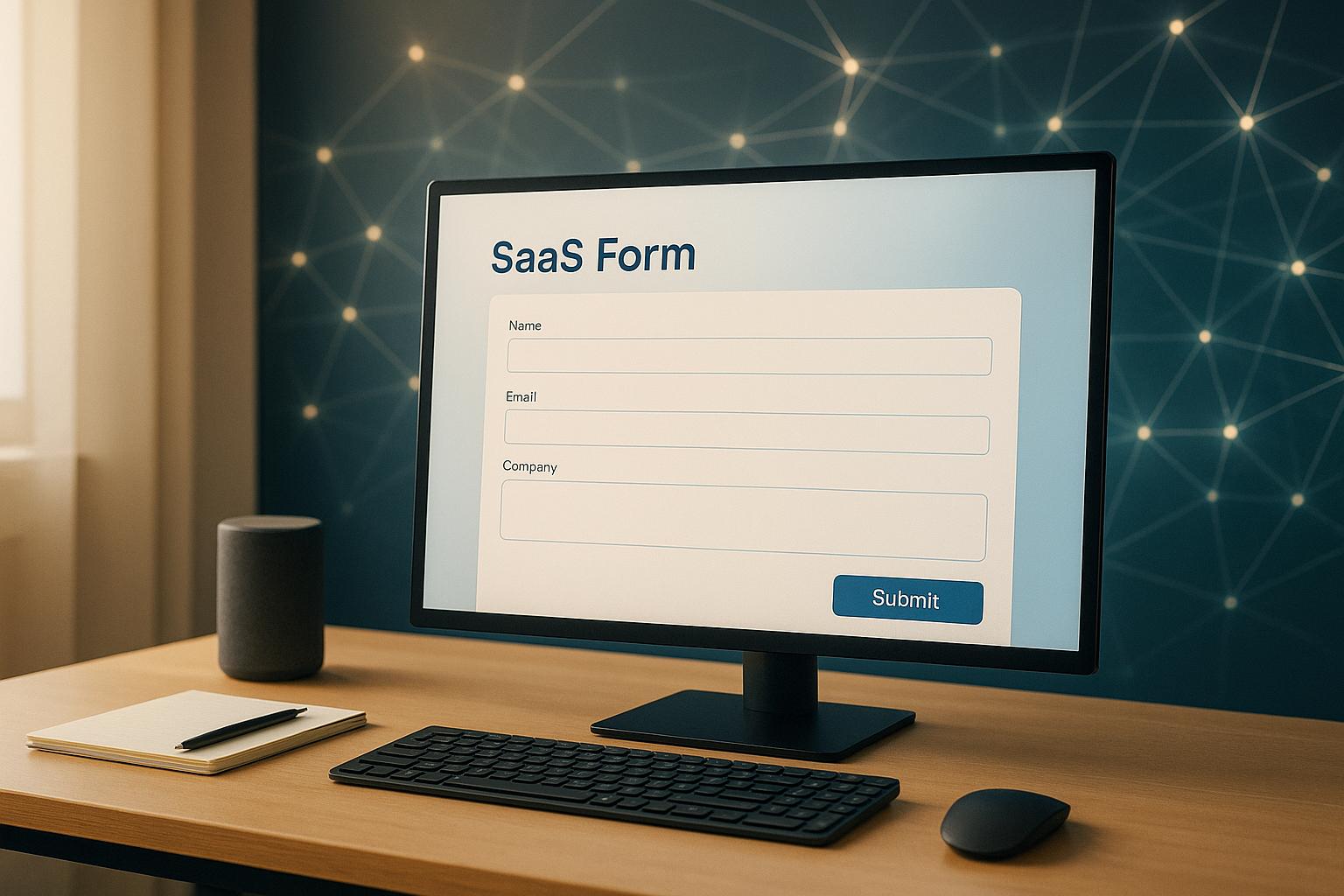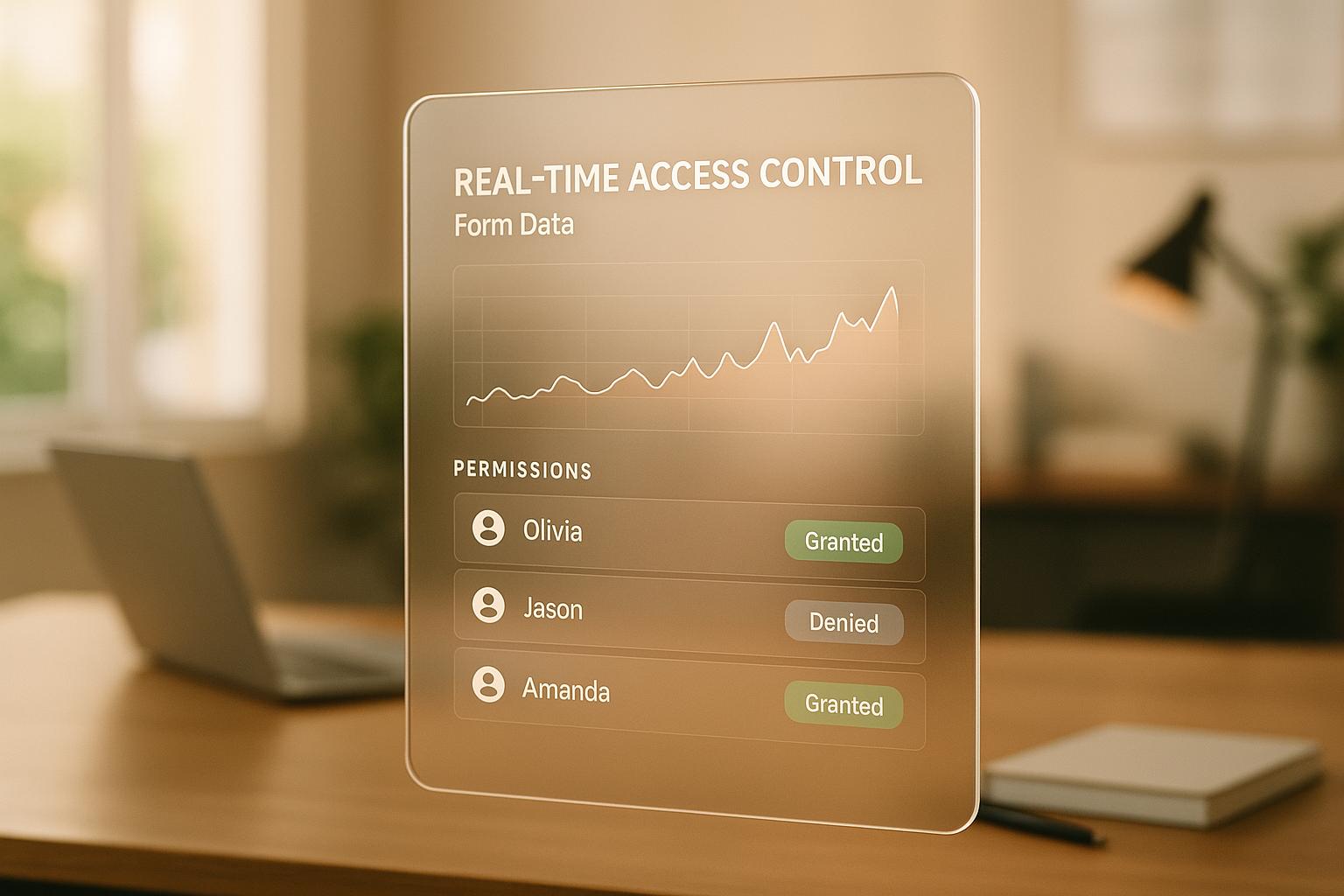Best Practices for Custom Thank You Pages

Custom thank you pages are more than just polite acknowledgments - they’re a chance to build trust, guide users, and drive further engagement. A well-crafted thank you page can confirm actions, provide clear next steps, and even increase conversions by up to 30%. Here’s what you need to know:
- Brand Consistency: Match your page’s design to your website’s look and feel for a unified experience.
- Mobile-Friendly & Accessible: Ensure the page works well on all devices and is easy to navigate for everyone.
- Clear CTAs: Use prominent, action-focused buttons like “Download Now” or “Book a Demo.”
- Personalization: Address users by name and reference their specific action to make the experience feel tailored.
- Bonus Content: Offer extras like guides, discounts, or links to related resources.
- Advanced Features: Use dynamic content, analytics, and CRM integrations to optimize follow-ups and gather insights.
- Continuous Testing: Regularly A/B test layouts, messaging, and CTAs to improve performance.
How to create a custom “thank you” page
Design Best Practices for Custom Thank You Pages
A well-thought-out thank you page does more than just confirm a completed action - it builds trust, strengthens your brand, and encourages users to take the next step. The design plays a key role in creating a seamless experience that keeps users engaged and aligned with your brand.
Match Your Brand Identity
Your thank you page should feel like an organic part of your website, not a separate or disconnected element. To achieve this, replicate your website's logo, color scheme, typography, and imagery on the thank you page. This consistency fosters trust and reinforces your brand's identity, creating a unified experience for users.
For example, if your website features a distinct shade of blue and a specific font, your thank you page should use the exact same elements. This attention to detail not only reassures users but also supports your broader conversion goals.
Why does this matter? Research shows that branded thank you pages can boost conversion rates by as much as 50% compared to generic designs. Familiar branding makes users feel more comfortable and confident, which encourages further interaction. By maintaining visual consistency, you're not just reinforcing your brand - you’re keeping users engaged and paving the way for their next action.
Mobile-Friendly and Accessible Design
With over half of all web traffic in the U.S. coming from mobile devices, ensuring your thank you page is responsive across all screen sizes is no longer optional - it’s essential. Whether users are browsing on a smartphone, tablet, or desktop, your page should adapt seamlessly.
Beyond responsiveness, accessibility is critical. High-contrast colors, legible fonts, and alt text for images ensure all users, including those with disabilities, can interact with your page. Accessibility isn’t just about meeting legal requirements like ADA compliance - it’s about improving the overall user experience and reaching a broader audience.
To ensure your thank you page is both mobile-friendly and accessible, test it with screen readers and validate its performance across different devices. This proactive approach helps you identify and fix potential issues before they impact real users, ensuring a smooth experience for everyone.
Clear Call-to-Action Buttons
Call-to-action (CTA) buttons are the gateway to the next step in your customer’s journey. These buttons should stand out visually, use action-oriented language, and be positioned where users can’t miss them - ideally above the fold.
Effective CTAs are all about clarity and focus. Use one primary CTA to guide users, such as "Download Your Guide", "Book a Demo", or "Explore Our Resources". Avoid cluttering the page with multiple CTAs, as this can confuse users.
Design-wise, the buttons should use contrasting colors to stand out from the rest of the page and be large enough for easy tapping on mobile devices - typically at least 44px by 44px. The text should be specific and action-driven, steering clear of vague phrases like "Click Here" or "Submit."
A great example is Segment’s thank you page, which features a clear CTA, social proof, and links to additional resources, resulting in higher engagement rates. Similarly, Productive Shop’s thank you page combines a cheerful confirmation message with links to more content, helping build loyalty and retain users.
To maximize effectiveness, place your primary CTA near the top of the page so it’s immediately visible after users see the thank you message. If you include a secondary CTA, make it less prominent but still accessible. This structured approach ensures users are guided to the most important action while maintaining clarity and focus.
Content That Engages and Converts Users
A well-crafted thank you page can do more than just acknowledge a user's action - it can build relationships, set expectations, and encourage further engagement. Striking the right balance between gratitude, useful information, and added value is essential for creating a post-conversion experience that leaves a lasting impression.
Personal Thank You Messages
Generic thank-you messages can feel cold and impersonal. Instead, consider adding a personal touch by addressing users by name and referencing their specific action. For example, instead of a bland "Thank you for your submission", you could say, "Thank you, Sarah, for signing up for our newsletter! We're thrilled to have you join us." This approach not only fosters trust but also reassures users that their individual effort is valued.
Brands like Salesforce excel at this by using the user's name and reinforcing the connection. Similarly, referencing the specific action - like "Your request for the 2025 Marketing Trends Guide has been received" - confirms success and eliminates confusion. Adding a photo or video of a real team member to your thank-you page can further humanize the interaction, making it feel more authentic and relatable.
What Happens Next
Once you've personalized your message, it's crucial to outline the next steps clearly. After a user completes a form or makes a purchase, they’ll want to know what to expect next. For example, you could explain that a confirmation email is on its way or provide a timeline for follow-ups. This transparency helps manage expectations and keeps users engaged as they anticipate the next part of their journey.
To take it a step further, advanced form tools like Reform allow you to tailor follow-up actions based on user responses. For instance, depending on how a user qualifies, they might be directed to a prerecorded demo or offered a VIP scheduling link. This level of customization ensures that the follow-up feels relevant and meaningful to their specific needs.
Bonus Content That Adds Value
Your thank you page is an excellent opportunity to offer something extra that keeps users engaged beyond the initial interaction. Whether it’s downloadable resources, special discounts, or curated links to related content, these bonus offerings can deepen the connection with your audience.
For example, you might include links to popular blog posts, a checklist related to their interests, or a discount on a relevant course. Gamified elements, like a "scratch card" for a surprise discount, can also encourage immediate action. Adding social proof - such as client testimonials or user-generated content - can further validate their decision and build trust.
sbb-itb-5f36581
Advanced Features for High-Performing Thank You Pages
Once you've nailed the basics like personalized messages and clear next steps, it's time to level up. Advanced features can turn your thank you pages into powerful tools for driving engagement and gathering insights. These features don't just acknowledge a user - they actively guide them through their journey while equipping you with actionable data for future campaigns.
Dynamic Content and Smart Routing
Dynamic content is like having a personal concierge for every visitor. It adjusts what users see based on their responses, behaviors, or profile details. Instead of showing everyone the same generic thank you page, you can create tailored experiences that point each user to the most relevant next step.
Take conditional routing, for example. This feature allows you to direct users down different paths immediately after they submit a form. Let’s say a highly qualified lead lands on your page - they might see a VIP link to schedule a one-on-one consultation. Meanwhile, someone still exploring their options could be shown a demo video or educational materials. Reform’s conditional routing system uses user inputs to customize content, delivering a 10–30% boost in engagement. Plus, tracking these personalized interactions helps you refine and improve the experience over time.
Analytics and Lead Data Collection
To make your thank you pages work harder, you need to understand how users interact with them. Advanced analytics tools can track everything from click-through rates on calls-to-action to how long visitors stay on the page and whether they engage with bonus content.
By analyzing metrics like secondary conversion rates and bounce rates, you can pinpoint what’s working and what’s not. For instance, if users are ignoring your bonus content links, it might be time to make those links more prominent or offer different resources.
Reform simplifies this process with built-in analytics that track user behavior automatically - no extra tools or complicated setup required. It also supports progressive profiling, gathering details about user preferences and challenges over time. This enriched data helps you create more targeted follow-up campaigns and enables sales teams to focus on high-priority leads. Businesses using these techniques have reported up to a 215% increase in qualified leads for B2B and SaaS industries.
Marketing and CRM Tool Connections
Data is great, but it’s even better when it flows seamlessly into your existing systems. Integrating your thank you pages with marketing and CRM tools ensures that lead data moves effortlessly from form submission to follow-up workflows. This eliminates manual data entry, reduces errors, and ensures no lead slips through the cracks.
Reform’s integrations make this process smooth by syncing lead data directly with your marketing and CRM platforms. This automation triggers personalized follow-up actions, like assigning leads to sales reps or kicking off email sequences. The result? A 20% boost in lead qualification rates and better tracking of the customer journey from first interaction to closed deal.
Whether you're using native integrations or webhook/API connections, the flexibility is there. You can segment leads by industry, budget, or other criteria to ensure they’re matched with the right follow-up strategy. These integrations transform your thank you page from a simple acknowledgment into a cornerstone of your revenue strategy.
Testing and Improving Your Thank You Pages
To keep your thank you pages engaging and effective, continuous testing is key. User behavior and marketing goals evolve, so your pages need to keep up. This phase builds on your design and personalization efforts to maintain strong user engagement over time.
A/B Test Different Versions
A/B testing is a powerful way to refine your thank you pages. The idea is simple: create two or more versions of the page that differ in just one element, then compare their performance. This helps you pinpoint what works best for your audience.
Start with high-impact elements like the color, wording, and placement of your call-to-action (CTA) buttons. For instance, test whether “Get Started Now” outperforms “Continue Your Journey.” You can also experiment with layout changes - try a centered design versus a left-aligned one, or see if placing bonus content above the main message improves click-through rates. The key is to run these tests long enough to collect enough data for meaningful results, which typically means a few hundred interactions per variation.
For example, Basecamp tested different combinations of confirmation messages alongside immediate onboarding access. This iterative approach helped them increase trial engagement rates by finding the right mix of acknowledgment and action.
Important Metrics to Track
To improve your thank you pages, you need to track the right metrics. Focus on data that reflects user engagement and business outcomes. Some key metrics include:
- Bounce rate: How often visitors leave without taking further action.
- Time on page: Indicates how engaging your content is.
- Next-step conversions: Tracks whether users complete the desired follow-up action.
- Click-through rates: Measures how often users interact with specific elements.
Once you identify a winning variation, review these metrics to confirm its effectiveness.
Using Feedback and User Data
Analytics can tell you a lot, but direct user feedback adds another layer of insight. A short survey can uncover what users think, with questions like, “How can we improve your experience?” or “What would be most helpful to you right now?”
Behavioral data is another goldmine. Tools like heat maps show how users interact with your page - where they click, how far they scroll, and which sections they ignore. These insights can guide your next steps. For example, if users frequently click on non-interactive elements, consider turning those into clickable features.
Reform's real-time analytics simplify this process by automatically tracking user interactions. You can easily see which elements get the most attention and identify behavior patterns without setting up complex tracking systems.
Combining feedback and behavioral data creates a roadmap for improvement. If users often ask for clearer next steps, add more detailed instructions. If heat maps reveal users skipping over key content, adjust the layout to make it more prominent.
Salesforce has seen success with this approach, using user feedback to refine their personalized thank you messages. This led to stronger user engagement and a deeper connection with their audience.
The ultimate goal is to establish a feedback loop. Regularly analyze both the numbers and user comments to keep your thank you pages relevant and effective at driving conversions. By doing this, you ensure your pages stay in sync with user expectations and continue delivering results.
Key Takeaways for Effective Thank You Pages
Creating effective thank you pages is about blending thoughtful design, engaging content, smart features, and constant refinement to leave a strong impression and encourage conversions.
Start with a design that aligns with your brand's identity. Use consistent colors, fonts, and logos to maintain a cohesive look. Don’t overlook mobile responsiveness - your thank you pages should work seamlessly on any device to ensure a smooth user experience.
Next, focus on personalized, engaging content. A heartfelt thank you, clear next steps, and helpful bonus resources can turn a simple acknowledgment into an opportunity for further engagement. Adding a human touch - like team photos or video messages - can make your brand feel more relatable. Including social proof, such as testimonials or reviews, can also help build trust and credibility.
To take things up a notch, integrate advanced features. Dynamic content and tools like real-time analytics or automated workflows can transform your thank you pages into powerful conversion tools. For example, platforms like Reform offer features that not only optimize these pages for conversions but also simplify lead management.
But it doesn’t stop there. Continuous testing and tweaking are what separate average thank you pages from exceptional ones. A/B testing different designs, messages, and calls-to-action can help you pinpoint what resonates most with your audience. This kind of data-driven approach can lead to impressive results - some B2B and SaaS companies have reported up to a 215% increase in qualified leads through focused testing. Keep an eye on key metrics like conversion rates, click-through rates, interactions with bonus content, social shares, and lead quality. These insights can guide your ongoing improvements and even boost revenue.
Finally, remember that thank you page optimization is an ongoing effort. Regularly analyze data and gather user feedback to keep your pages relevant and effective. Tailoring the experience to specific user actions and audience segments can deepen engagement and strengthen customer relationships. These strategies are your roadmap to making every post-conversion interaction count.
FAQs
How do personalized thank you messages boost user engagement and build trust?
Personalized thank-you messages are a simple yet powerful way to strengthen user engagement and build trust. When you acknowledge specific actions - like filling out a form, making a purchase, or subscribing - you’re showing users that their interaction with your brand genuinely matters.
This thoughtful approach not only makes users feel valued but also deepens their connection with your brand. It can inspire loyalty, encourage repeat interactions, and reinforce the idea that their time and effort are truly appreciated.
Why should you integrate analytics and CRM tools with your thank you pages?
Integrating analytics and CRM tools with your thank you pages can do wonders for your workflow and lead management. With real-time analytics, you gain insights into how users behave after submitting forms, allowing you to spot areas for improvement and fine-tune your strategy.
When linked to your CRM or marketing automation tools, leads are automatically captured, sorted, and enriched - no manual input required. These connections also help with tasks like custom field mapping and avoiding duplicate entries, saving you from unnecessary data headaches. The result? A smoother process and better focus on nurturing leads, all while boosting your conversion rates.
Why is it important to continuously test thank you pages, and which key metrics should you monitor?
Continuous testing plays a crucial role in refining thank you pages. It helps uncover what truly connects with your audience while improving their overall experience. By studying user interactions, you can make informed changes that increase engagement and drive higher conversions.
Focus on tracking key metrics like conversion rates, bounce rates, and time spent on the page. These data points provide valuable insights into how your page is performing, enabling you to fine-tune its design, content, and functionality for maximum impact.
Related Blog Posts
Get new content delivered straight to your inbox

The Response
Updates on the Reform platform, insights on optimizing conversion rates, and tips to craft forms that convert.
Drive real results with form optimizations
Tested across hundreds of experiments, our strategies deliver a 215% lift in qualified leads for B2B and SaaS companies.





